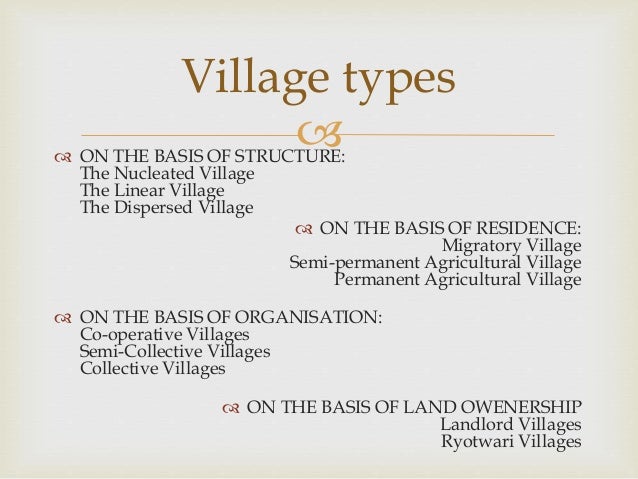Relevance: Sociology: Social Structure: Rural and Agrarian Social Structure: The idea of Indian village and village studies. Agrarian social structure – evolution of land tenure system, land reforms.
- The Indian village had a considerable degree of diversity. This diversity was both internal as well as external. The village was internally differentiated in diverse groupings and had a complex structure of social relationships and institutional arrangements. Even within a particular region of the country, not all villages were alike.
- The stereotypical image of the Indian village as a self-sufficient community was contested by anthropological studies. Beteille, argued ‘at least as far back in time as living memory went, there was no reason to believe that the village was fully self-sufficient in the economic sphere.
- Similarly Srinivas too contested the colonial notion of the Indian village being a completely self-sufficient republic. The village, he argued, ‘was always a part of a wider entity.
- The fact that the village interacted with the outside world did not mean it did not have a design of its own or could not be studied as a representative unit of Indian social life. While villages had horizontal ties, it was the vertical ties within the village that governed much of the life of an average person in the village.
- Village provided an important source of identity to its residents. Different scholars placed different emphasis on how significant the village identity was when compared to other sources of identification, such as those of caste, class or locality. They attach notions of respect, insult and pride with their village. Insult of one’s village, according to Srinivas, has to be avenged like insult of one’s father, brother and wife. Adrian Mayer termed such solidarity as ‘Village patriotism’.

- S C Dube argued that though Indian villages varied greatly in their internal structure organization, in their ethos and world-view, and in their life-ways and thought-ways, on account of variety of factors, village communities all over the Indian sub-continent had a number of common features. The village settlement, as a unit of social organization, represented a kind of solidarity which was different from that of the kin, the caste and the class.
- Each village was a distinct entity, had some individual mores and usages, and possessed a corporate unity. Different castes and communities inhabiting the village were integrated in its economic, social, and ritual pattern by ties of mutual and reciprocal obligations sanctioned and sustained by generally accepted conventions. Notwithstanding the existence of groups and factions inside the settlement, people of the village could, and did face the outside world as an organized, compact whole.
- Village life is also viewed as essentially a religious life.
- Some of the studies also cautioned against an over harmonised picture. Studies by F G Bailey, Lewis, Andre Beteille, etc. also highlighted divisive tendencies. F G Bailey, for example provided a radical critique of the unity-reciprocity thesis and highlighted the coercive aspects of caste relations. Similarly, Beteille had argued in his study of village Sripuram that – ‘Village as a whole is constituted a unit in a physical sense and, to a much lesser extent, in the social sense.’ He also highlighted the gender dimension and according to him, village was not only caste conscious, it was also class and gender conscious.

